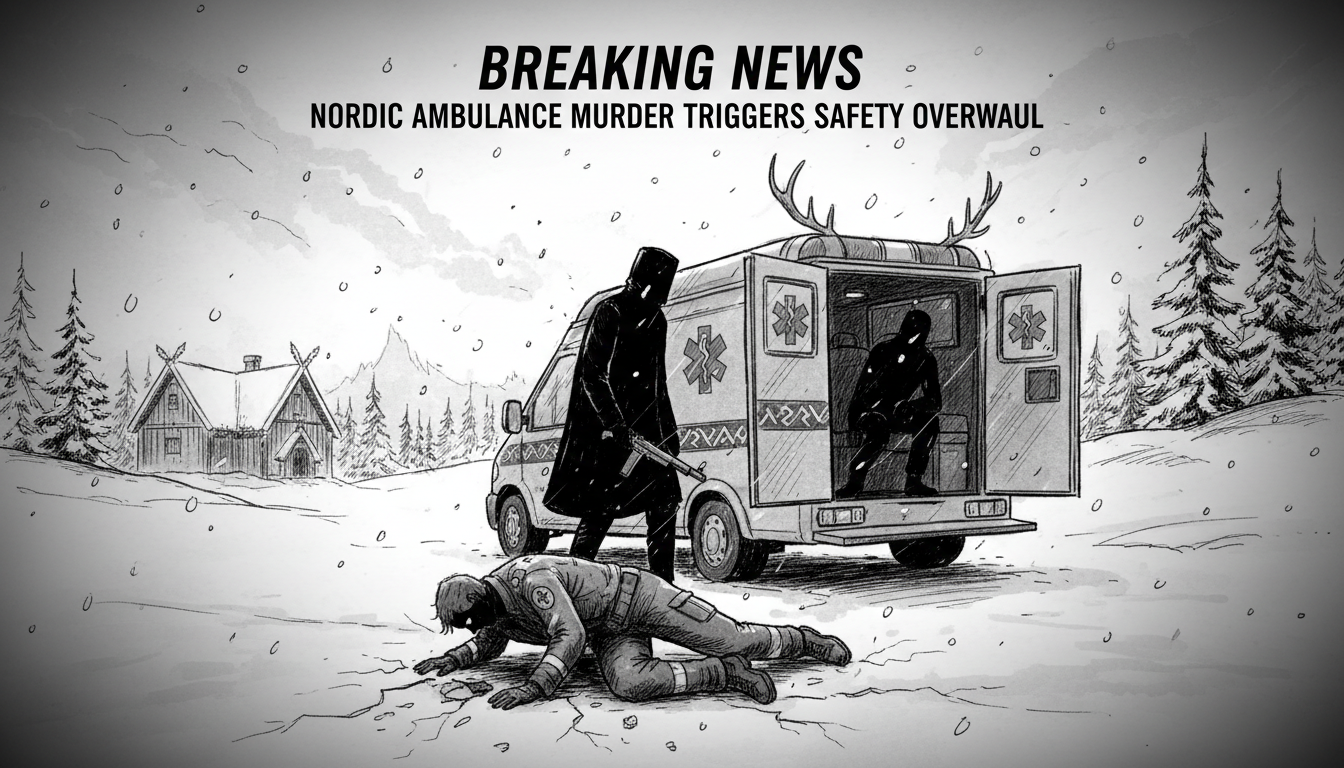A Swedish ambulance worker died after a violent attack during an emergency call in Harmånger. The 26-year-old suspect had previously threatened ambulance staff, yet police were not dispatched to accompany the medical team. This tragic incident has raised serious questions about emergency response protocols in Sweden.
The suspect himself called emergency services requesting an ambulance. Recordings reveal he informed the operator about his threatening behavior toward ambulance personnel days earlier. That previous incident required police transport. Despite this history, the emergency center assessed that police presence was unnecessary.
Helena Löfgren and her colleague reviewed the situation en route to the call. They noted the emergency operator's assessment that the patient was alone, had called himself, and showed no outward aggression. The medical team trusted this professional judgment and proceeded without police backup.
Upon arrival, the ambulance crew took basic precautions by blocking the door with a foot. The suspect opened calmly, leading the medical staff to lower their guard. Then the situation turned violent. The colleague saw the suspect's eyes widen and his right hand rise holding a silver-colored knife.
Helena was stabbed in the attack. Both ambulance workers managed to escape the apartment. Members of the public, followed by firefighters and police, came to their assistance. Helena was transported to hospital but could not be saved. Her colleague escaped physical injury.
The threatening situation the suspect described to emergency operators involved a baseball attack days earlier. Police had been called during that incident when he became violent toward another ambulance worker. Forensic psychiatrists determined the man did not suffer from serious mental illness during the attack.
Emergency services refuse to explain why police weren't dispatched given the available information. They cite ongoing investigations. The regional healthcare authority also declined interview requests but stated they take employer responsibility and workplace safety seriously. They emphasized full cooperation with police and work environment authorities while supporting affected staff.
This tragedy highlights critical vulnerabilities in Swedish emergency response systems. When medical personnel cannot rely on accurate threat assessments, their fundamental safety becomes compromised. The incident follows patterns seen in other Nordic countries where resource constraints sometimes override safety precautions. Sweden's decentralized healthcare system creates challenges for standardized emergency protocols across regions.
International readers should understand that while Nordic emergency services generally maintain high standards, this case reveals how procedural gaps can have fatal consequences. The ongoing investigations will likely prompt policy changes affecting emergency medical responses throughout Sweden. The outcome could influence similar protocols in Norway and Denmark, where emergency services face comparable operational challenges.
The broader implications extend to workplace safety for all emergency responders. This case demonstrates how previous violent behavior must trigger automatic safety measures, regardless of current presentation. The medical community awaits answers about why established protocols failed to protect these healthcare workers.

